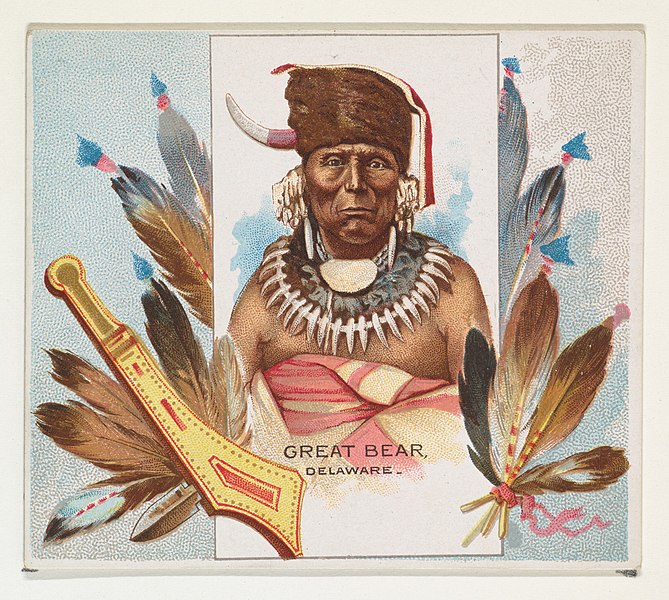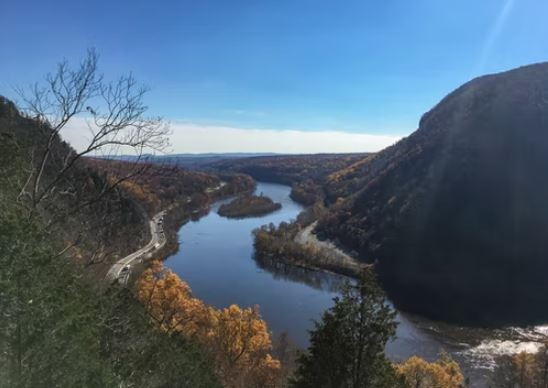Delaware, also known as Lenni Lenape or Lenape, was a group of North American Indians who spoke Algonquian and lived along the Atlantic coast from Cape Henlopen, Delaware, to western Long Island. They were primarily located in the Delaware River Valley before colonization, which is where the confederation got its name. However, the group calls itself Lenape or Lenni Lenape, which means, rich people.
Delaware has historically relied heavily on agriculture, with hunting and fishing also playing a significant role in its economy. Aside from the famous people who are part of the history of Brooklyn, the Delaware tribe has also a significant history. Several hundred people lived in the farming settlements in the summer; in the winter, smaller family bands hunted across smaller areas. According to maternal lineage, Delawareans belonged to one of three clans. Clans were further subdivided into lineages, whose members typically resided in a longhouse. The essential element of autonomous communities, of which there were probably 30 or 40 in 1600, were clusters of longhouses. A council made up of lineage sachems (chiefs) and other illustrious individuals made decisions on the community’s public issues. The sachem was chosen and removed by the line’s oldest female.
Delaware where the indigenous people closest to William Penn, and as a result, they were rewarded with the infamous Walking Purchase, a deal that stripped them of their lands and forced them to dwell on territory allotted to the Iroquois. They moved westward in phases, halting on the Susquehanna, Allegheny, and Muskingum rivers in Ohio and the White River in Indiana until being encroached upon by European settlers and taken over by the Iroquois around 1690.
After being uprooted for 60 years, Delaware people who had been living beyond the Ohio River revived their tribal ties, proclaimed their independence from the Iroquois, and resisted the colonists’ advance. In the French and Indian War, they vanquished the British general Edward Braddock, and they initially backed the Americans throughout the Revolution. They gave up their Ohio properties as part of the Treaty of Greenville (1795). Although many of the bands split up, some had regrouped in Kansas by 1835, the majority of these were relocated to Oklahoma in 1867. In the early twenty-first century, there were over 16,900 Delaware descendants.
About the Delaware Tribe
People who resided along the Delaware River were given the name DELAWARE, and the river itself was given that name in honor of Lord de la Warr, the colony’s governor. Later, practically all Lenape people began to go by the name Delaware. We call ourselves LENAPE (len-NAH-pay) in our language, which is a member of the Algonquian language family, and it roughly translates to “The People.” In the early 1600s, our forefathers were among the first Indians to interact with the Dutch, English, and Swedish Europeans. The reason Delaware was known as the “Grandfather” tribe was that we were regarded as peacemakers by other tribes and frequently helped to resolve conflicts between opposing tribes. When it came to battle, we were also renowned for our ferocity and tenacity as warriors, but we preferred to walk the path of peace with the Europeans and other tribes.
In the views of our people, many of the early treaties and land transactions we agreed to with Europeans were more akin to leases. Early Delaware was unaware that land could be traded or sold. The Lenape people were merely exploiting the land to provide food and shelter for their people; it belonged to the Creator. They were given access to the land when they needed a place to dwell after disembarking their ships following a lengthy voyage. For the compassion of our people, they offered us a few small presents, but in the eyes of the Europeans, these gifts represented the cost of buying the country.
On September 17, 1778, our Delawarens ratified the first Indian treaty with the newly established United States Government. However, despite conflict and peace, our forefathers were forced to continue ceding their holdings and emigrating to the west (first to Ohio, then to Indiana, Missouri, Kansas, and finally, Indian Territory, now Oklahoma). Through several migrations, a tiny group of Delaware people who belonged to our tribe in the late 1700s is now living in Anadarko, Oklahoma. Small groups of Delaware people escaped to Canada during a period of intense persecution, and they currently live on two reserves in Ontario, the Munsee-Delaware Nation and the Delaware Nation at Moraviantown.
History of the Delaware Tribe
Before the arrival of the Europeans, the Lenni Lenape, or Delaware people as we are now called, had a very extensive history. It might be best to start with the Hudson River Valley’s forested streams because so much has been lost over the years. Beginning with Delaware people can now be found in small settlements all over the United States and Canada, including the states of New Jersey and Delaware, that portion of southeast Pennsylvania that lies between the Susquehanna and Delaware rivers, and the southeast region of New York state west of the Hudson (Weslager 1972:33).
Families and individual tribal members are dispersed throughout North America, with the biggest populations primarily living in Oklahoma and Ontario, Canada. They have honorably and bravely contended for every foot of ground, as noted by frontier artist George Catlin in First Artists of the West, George Catlin Paintings and Watercolors (Troccoli 1993: 52) when describing the Delaware character and reaction to the constant push into uncharted lands.
The Absentee Delaware, whose status as “absentee” was first described to us, split out from the main body of the tribe soon after the American Revolution. To persuade the Indians to sign the first treaty between the fledgling United States and them in 1778, Europeans promised to include a 14th state—an Indian state. Of course, no Indian state was ever established, and by 1782, Absentee Delaware was forced to cross the borders of the newly formed United States into Spanish territory west of the Mississippi River due to the frontier’s continued expansion and the violence that frequently broke out because of that expansion (Hale 1987:1).


